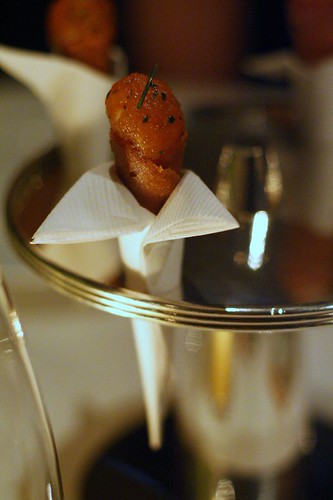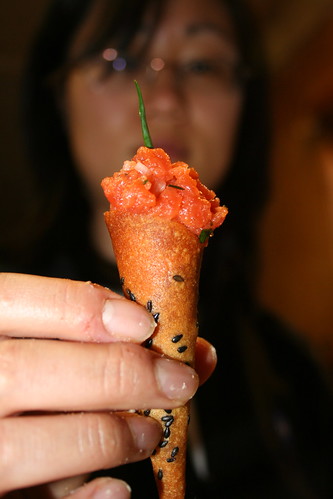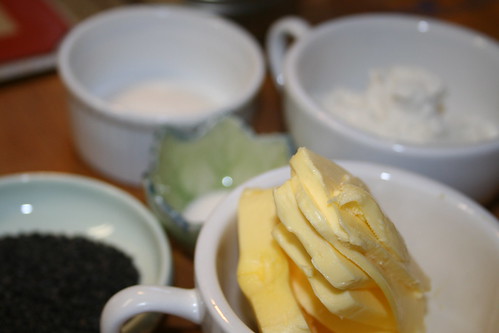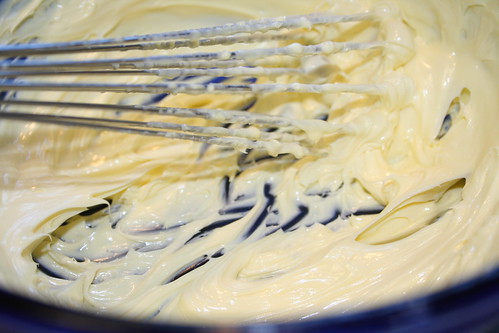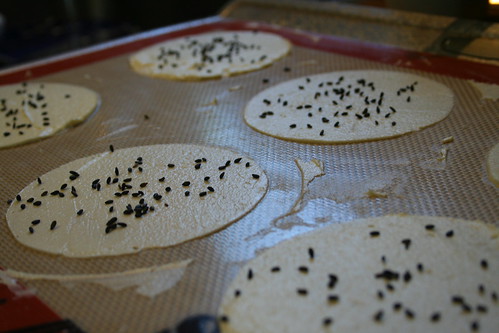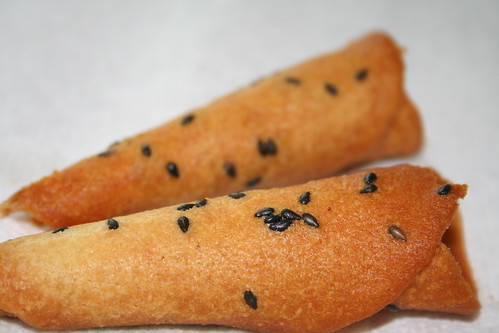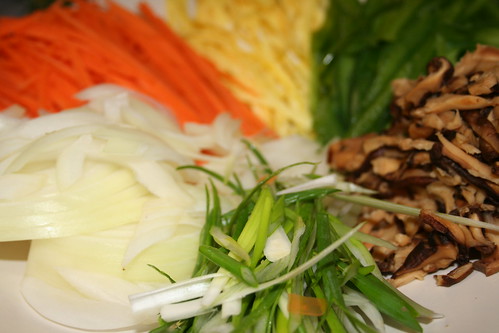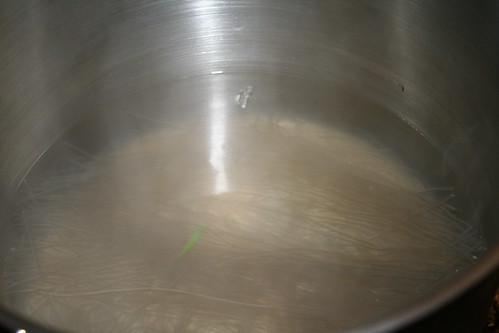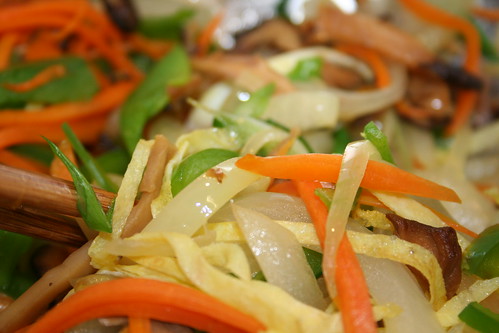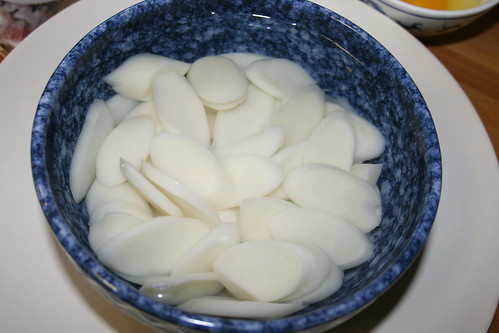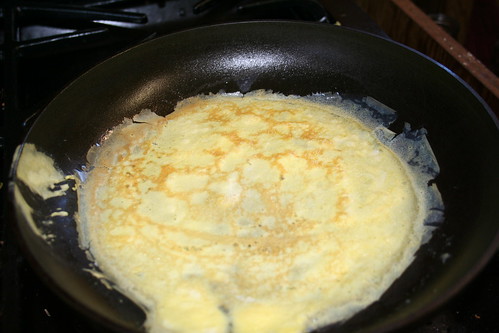I went back and read the post where we blogged about going to the French Laundry, and I'm actually sort of surprised by how much better Ei-Nyung and I are as cooks than we were say, three years ago. Back then, most dinners would consist of rice and some curry, something take out, or just something random and simple. Nothing really terrible, it's just that we weren't really into cooking - it was just something you did when you had to.
But I think it was happening on the Naked Chef (Jamie Oliver) that really begun the sea change. His series, Pukka Tukka (still my favorite of his TV series'), really showed that good, flavorful, healthy food didn't have to be particularly complex. The roast chicken from his first book is still one of the best roast chickens I've ever had (though the butterflied chicken & 40 cloves or chicken with sage & vermouth sauce from America's Test Kitchen are probably better), but more importantly, the recipes were accessible, and his *excitement* about cooking really shone through.
This was essentially the motivator to get us in the kitchen, and fostered an interest in food. After Jamie Oliver came Alton Brown, which was the perfect transition - excitement to accessible knowledge. Alton Brown, in simple, easy to understand terms, began to explain the science of food in a way that appealed to the pragmatic, hacker-y side of me (a side that's not particularly developed, but really entertained by making a meat smoker out of a locker).
So, Jamie Oliver (simple & enthusiastic) + Alton Brown (scientific & entertaining) led to America's Test Kitchen, which was methodical and exacting. This was really good because Alton Brown had given us the basics of the science, while America's Test Kitchen had applied that science with rigor and thoroughness. Their iterative approach, coupled with explanations as to *why* things are they way they are was understandable because of the basic foundation of Good Eats (Alton Brown's show), and by this point, we'd developed enough experience that we could tackle these recipes with confidence.
Around this time, we ate at our first really high-end restaurant, Morimoto. Iron Chef fits in somewhere in here - before any of the other stuff, really, since I'd been watching Iron Chef since high school. Iron Chef, I think, really opens your mind about food, because the things they create are utterly bizarre, fascinating, and you get a chance to really see what skilled people can do, and what does and doesn't work.
But Morimoto was an eye-opener. The balance of flavor, and the unusual combinations of flavors were things that I'd never experienced at that level before. It really was a moment where it took food to the level of art, for me, and raised what I could *expect* out of a great meal. Following Morimoto, we'd been to Chez Panisse, then Manresa, and the French Laundry, then WD-50, and frankly, it was a pretty good progression of restaurants. Morimoto was familiar, in some weird way, because we'd seen so much of Chef Morimoto on Iron Chef. Then, Chez Panisse showed us essentially the mainstay of California Cuisine, which is basically the foundation of all "fine dining" in the area. Following that, Manresa was a bit more experimental, but definitely in the vein of California Cuising. The French Laundry is then its apex, and WD-50 is a good introduction to post-California Cuisine, or as some call it, Molecular Gastronomy.
So, the progression was sensible, sort of in the same way that our interest in food was developed by a sensible progression of shows, and information.
But it's strange - again, that three years ago, a steak would have essentially been the apex of my abilities as a cook, and now, we can competently mimic some dishes from the French Laundry, I'm willing to make decisions about replacing various ingredients, I can understand and attempt to reconstruct certain dishes I liked at restaurants, and in some cases, take a recipe and change it enough that I could say that this is definitely "my" take on it.
I'm not a great cook - not by any stretch of the imagination. But I'm good enough to do some things that are reasonably impressive, I enjoy the hell out of it, and it's a very, very useful skill to have. It's just strange that it's developed by essentially luck, that we managed to find the right information at the right time. I suppose you could make an argument that we found those shows and restaurants and books relevant at the time because of our skill levels, but a lot of it wasn't planned - it was just something we happened upon by circumstance or chance.
Wacky stuff.
